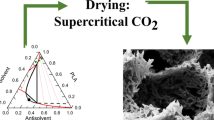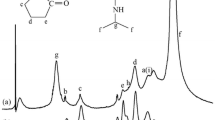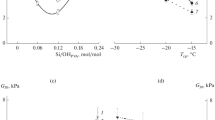ABSTRACT
Purpose
To prepare a thermoreversible gel system able to work as a medium for crystallization at around 20°C, allowing easy retrieval of crystals by simply decreasing the gel temperature. Lactose was selected has model substance for crystallization.
Methods
Water solutions with different% of poloxamer 407, α-Lactose monohydrate, and ethanol were prepared and analysed by rheology to understand how the different components alter the gelling temperature. The systems with the required characteristics for lactose crystallization were prepared and the crystals recovered by cooling and then filtering the dispersion.
Results
Rheological analysis showed interaction between the poloxamer and lactose. Increasing the quantity of poloxamer or lactose lowered the gelation temperature while the addition of small amounts of ethanol had a modest effect on the same property. These data were used to identify the ideal concentration of the components in order to prepare a system matching the features of our purpose. Such system yielded high quality crystals, with well-defined geometry and narrow particle size distribution.
Conclusion
Poloxamer is a very interesting polymer in that it is able to generate a reversible gelling medium from which crystals can be harvested by filtering, without the addition of any chemicals to promote the sol–gel transition.






Similar content being viewed by others
Abbreviations
- CI:
-
Carr index
- D50 :
-
median diameter
- DSC:
-
differential scanning calorimetry
- G′:
-
elastic modulus
- G″:
-
viscous modulus
- IQR:
-
interquartile range
- LSS:
-
lactose stock solutions
- PEO:
-
polyethylene oxide
- PPO:
-
polypropylene oxide
- PSS:
-
poloxamer stock solutions
- δ:
-
phase angle
- η*:
-
complex viscosity
- ρb :
-
bulk density
- ρt :
-
tapped density
REFERENCES
Shekunov BY, York P. Crystallization processes in pharmaceutical technology and drug delivery design. J Crystal Growth. 2000;211:122–36.
Liesegang RE. Phot Archiv. 1896;21:221.
Arora SK. Advances in gel growth: a review. Prog Crystal Growth Charact. 1981;4:345–78.
Robert MC, Lefaucheux F. Crystal growth in gels: principle and applications. J Crystal Growth. 1988;90:358–67.
Zeng XM, Martin GP, Marriott C, Pritchard J. Crystallization of lactose from carbopol gels. Pharm Res. 2000;17:879–86.
Zeng XM, Martin GP, Marriott C, Pritchard J. The use of lactose recrystallised from carbopol gels as a carrier for aerolised salbutamol sulphate. Eur J Pharm Biopharm. 2001;51:55–62.
Alexandridis P, Hatton TA. Poly(ethylene oxide)-poly(propylene oxide)-poly(ethylene oxide) block copolymer surfactants in aqueous solutions and at interfaces: thermodynamics, structure, dynamics, and modeling. Colloids Surf A Physicochem Eng Aspects. 1995;96:1–46.
Alexandridis P, Holzwarth JF, Hatton TA. Micellization of poly(ethylene oxide)-poly(propylene oxide)-poly(ethylene oxide) triblock copolymers in aqueous solutions: thermodynamics of copolymer association. Macromolecules. 1994;27:2414–25.
Linse P. Micellization of poly(ethylene oxide)-poly(propylene oxide) block copolymers in aqueous solution. Macromolecules. 1993;26:4437–49.
Mortensen K, Pedersen JS. Structural study on the micelle formation of poly(ethylene oxide)-poly(propylene oxide)-poly(ethylene oxide) triblock copolymer in aqueous solution. Macromolecules. 1993;26:805–12.
Ruel-Gariépy E, Leroux JC. In situ-forming hydrogels—review of temperature-sensitive systems. Eur J Pharm Biopharm. 2004;58:409–26.
Bonacucina G, Cespi M, Mencarelli G, Giorgioni G, Palmieri GF. Thermosensitive self-assembling block copolymers as drug delivery systems. Polymers. 2011;3:779–811.
Dumortier G, Grossiord JL, Agnely F, Chaumeil JC. A review of poloxamer 407 pharmaceutical and pharmacological characteristics. Pharm Res. 2006;23:2709–28.
BASF Aktiengesellschaft. Poloxamer 407-Thickening agent and gel former for the pharmaceutical industry, 2005, pp. 1–8.
Beddow J, Meloy T. Testing and characterization of powders and fine particles. London: Heyden & Son Ltd; 1980.
Carr RL. Evaluating flow properties of solids. Chem Eng. 1965;72:163–8.
Bonacucina G, Spina M, Misici-Falzi M, Cespi M, Pucciarelli S, Angeletti M, et al. Effect of hydroxypropyl beta-cyclodextrin on the self-assembling and thermogelation properties of Poloxamer 407. Eur J Pharm Sci. 2007;32:115–22.
Bohorquez M, Koch C, Trygstad T, Pandit N. A study of the temperature-dependent micellization of pluronic F127. J Colloid Interface Sci. 1999;216:34–40.
Microcal. OriginPro 8 SR1 manual software, 2007.
Cespi M, Bonacucina G, Mencarelli G, Pucciarelli S, Giorgioni G, Palmieri GF. Monitoring the aggregation behaviour of self-assembling polymers through high-resolution ultrasonic spectroscopy. Int J Pharm. 2010;388:274–9.
Desai PR, Jain NJ, Sharma RK, Bahadur P. Effect of additives on the micellization of PEO/PPO/PEO block copolymer F127 in aqueous solution. Colloids Surf A. 2001;178:57–69.
Rodriguez-Hornedo N, Murphy D. Significance of controlling crystallization mechanisms and kinetics in pharmaceutical systems. J Pharm Sci. 1999;88:651–60.
Wade A, Weller PJ. Handbook of pharmaceutical excipients. Washington DC: American Pharmaceutical Association; 1994.
Machado JJB, Coutinho JA, Macedo EA. Solid–liquid equilibrium of α-lactose in ethanol/water. Fluid Phase Equilibria. 2000;173:121–34.
Ford LJ, Timmins P. Pharmaceutical thermal analysis, techniques and application. Chichester: Ellis Horwood Limited; 1989.
Garnier S, Petit S, Mallet F, Petit MN, Lemarchand D, Coste S, et al. Influence of ageing, grinding and preheating on the thermal behaviour of alpha-lactose monohydrate. Int J Pharm. 2008;361:131–40.
Walstra P, Jenness R, Badings HT. Dairy chemistry and physics. New York: Wilkey; 1984.
Author information
Authors and Affiliations
Corresponding author
Rights and permissions
About this article
Cite this article
Cespi, M., Bonacucina, G., Casettari, L. et al. Poloxamer Thermogel Systems as Medium for Crystallization. Pharm Res 29, 818–826 (2012). https://doi.org/10.1007/s11095-011-0606-3
Received:
Accepted:
Published:
Issue Date:
DOI: https://doi.org/10.1007/s11095-011-0606-3




